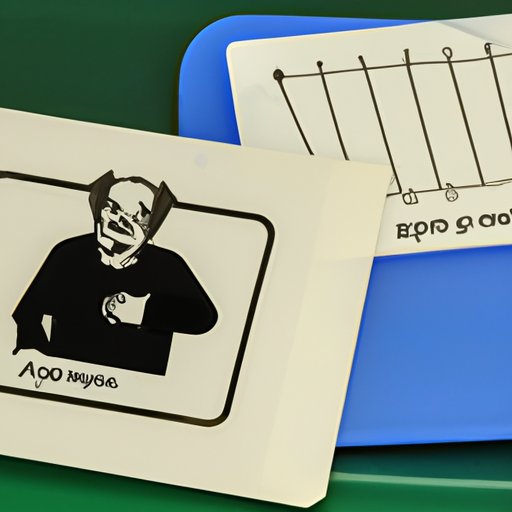
I. Introduction
Effective communication is a crucial life skill that is essential in both personal and professional settings. It enables us to convey our thoughts and feelings, connect with others, and build strong relationships. However, communicating effectively is not always an easy task. It requires us to be attentive to the needs of others, express ourselves clearly and concisely, and effectively manage our emotions.
This article aims to provide you with 7 simple tips and strategies for effective communication. You will learn how to listen actively, use clear and concise language, pay attention to nonverbal cues, practice empathy and understanding, avoid interrupting, ask for feedback, and be open and honest. Additionally, this article covers topics such as the art of communication, mastering communication skills, effective communication in the workplace, improving your communication, avoiding common misunderstandings, and using language to communicate with impact.
II. 7 Simple Tips for Effective Communication
Effective communication doesn’t have to be complicated. By practicing these 7 simple tips, you can improve your communication skills and build stronger relationships.
Tip #1: Listen actively
Active listening involves giving your full attention to the person speaking, understanding their perspective, and responding appropriately. To listen actively, you should maintain eye contact with the speaker, avoid distractions, and ask clarifying questions when necessary.
Tip #2: Use clear and concise language
Using clear and concise language helps to ensure that your message is easily understood by the person you are communicating with. To use clear language, avoid using jargon, slang, or complex words that your audience may not understand. Additionally, keep your message concise by eliminating unnecessary information.
Tip #3: Pay attention to nonverbal cues
Nonverbal cues, such as facial expressions, tone of voice, and body language, can often convey more than words alone. By paying attention to these cues, you can gain a better understanding of what the person is really trying to say.
Tip #4: Practice empathy and understanding
Empathy involves putting yourself in someone else’s shoes and understanding their perspective. By practicing empathy, you can establish a stronger connection with the person you are communicating with, even if you don’t necessarily agree with their point of view.
Tip #5: Avoid interrupting
Interrupting can be perceived as rude and disrespectful. Instead of interrupting, wait until the person has finished speaking before responding. This shows that you value their perspective and are actively listening to what they have to say.
Tip #6: Ask for feedback
Asking for feedback on your communication skills can be a great way to improve. Ask a trusted friend or colleague for their honest opinion on how you communicate and what areas you can improve.
Tip #7: Be open and honest
Open and honest communication is essential for building trust and establishing strong relationships. Be sincere in your communication, avoid hiding information or lying to others.

III. The Art of Communication: How to Be Heard and Understood
Effective communication is more than just practicing a few simple tips. It’s about understanding the components of effective communication, developing your communication style, and using techniques to convey information effectively.
Understanding the components of effective communication
Effective communication involves a sender, a message, a channel, a receiver, and feedback. The sender is the person who initiates the communication, the message is the information that is conveyed, the channel is the means by which the message is sent, the receiver is the person receiving the message, and feedback is the reaction or response of the receiver.
Developing your communication style
Your communication style is a reflection of your personality and how you prefer to interact with others. To develop your communication style, consider your strengths and weaknesses, communicate authentically, and be open to feedback.
Techniques for conveying information effectively
Effective communication involves more than just speaking or writing clearly. To convey information effectively, you should consider your audience, use examples and stories to illustrate your point, repeat key points, and use visual aids when appropriate.
IV. Mastering Communication Skills: A Beginner’s Guide
Mastering communication skills takes time and practice. Whether you’re a beginner or a seasoned communicator, these tips can help you improve your skills.
Identifying areas for improvement
Identifying your strengths and weaknesses can help you target areas for improvement. Consider what you want to improve in your communication skills and create an action plan to achieve your goals.
Tips for building rapport with others
Building rapport involves establishing a connection with others, which can improve communication and trust. To build rapport, show interest in the person you are communicating with, use open body language, and find common ground.
Developing active listening skills
Active listening involves not only hearing what the person is saying, but also paying attention to their nonverbal cues and asking clarifying questions. To develop your active listening skills, eliminate distractions, focus on the person speaking, and paraphrase what they have said to ensure that you understand correctly.
Techniques for conflict resolution
Conflict can arise in any communication. To resolve conflicts, listen actively, remain open-minded, and compromise where possible. Avoid criticizing or blaming and focus on finding a solution that works for everyone involved.
V. Effective Communication in the Workplace: Key Strategies for Success
Effective communication is essential in the workplace. Poor communication can lead to misunderstandings, decreased productivity, and even conflict. These strategies can help you communicate effectively with your colleagues and superiors.
Importance of communication in a workplace
Effective communication is essential for a successful workplace. It enables collaboration, builds trust, and improves productivity. Poor communication can lead to decreased morale, increased stress, and mistakes.
Overcoming communication barriers in the workplace
Communication barriers, such as cultural differences, language barriers, and physical distance, can make effective communication a challenge. To overcome these barriers, consider your audience, use simple language, and clarify your message as necessary.
Strategies for improving communication with colleagues and superiors
Improving communication with colleagues and superiors involves being assertive, clear, and concise. Use active listening skills, ask questions, and provide feedback when necessary. Additionally, be aware of your body language and tone of voice when communicating.
Techniques for delivering feedback effectively
Feedback is an essential part of communication in the workplace. To deliver feedback effectively, be specific, provide examples, and focus on the behavior, not the person. Additionally, provide actionable feedback that the person can use to improve.
VI. Improving Your Communication: 7 Habits to Adopt Today
Improving your communication skills takes practice and dedication. These 7 habits can help you become a more effective communicator.
Habit #1: Be present in the moment
Being present in the moment involves focusing your attention fully on the person you’re communicating with. Eliminate distractions, such as your phone or other devices, and give your full attention to the person speaking.
Habit #2: Practice active listening
Active listening involves hearing what the person is saying, paying attention to their nonverbal cues, and responding appropriately. Practice active listening by repeating what the person has said, asking clarifying questions, and summarizing your understanding.
Habit #3: Use positive language
Positive language helps to create a more supportive and collaborative environment. Use positive language by focusing on what can be done, using “we” instead of “you,” and avoiding negative or blaming language.
Habit #4: Eliminate distractions
Distractions can interfere with effective communication. Eliminate distractions by finding a quiet place to talk, turning off your phone, and avoiding multitasking.
Habit #5: Embrace feedback
Feedback is an essential part of improving your communication skills. Embrace feedback by seeking it out, listening carefully, and implementing suggested changes.
Habit #6: Practice patience and understanding
Effective communication can be challenging at times. Practice patience and understanding by taking a step back, considering the other person’s perspective, and remaining calm.
Habit #7: Manage your emotions
Managing your emotions is crucial in effective communication. Recognize your emotions, take a deep breath, and respond calmly and thoughtfully.
VII. Communication Breakdown: How to Avoid Common Misunderstandings
Communication breakdowns can lead to misunderstandings and conflict. These techniques can help you avoid common misunderstandings.
Common communication barriers
Common communication barriers include cultural differences, language barriers, and physical distance. To overcome these barriers, consider your audience, use simple language, and clarify your message as necessary.
Techniques for avoiding misunderstandings
To avoid misunderstandings, be clear and concise, ask clarifying questions, and provide feedback when necessary. Additionally, use active listening skills and check your understanding with the person you’re communicating with.
VIII. The Power of Words: Using Language to Communicate with Impact
The words you choose can have a powerful impact on the people you’re communicating with. Learn how to use language to communicate with impact.
The importance of choosing the right words
Choosing the right words involves considering your audience, connotation, and tone. Choose words that are appropriate for the situation, positive in tone, and easily understood by your audience.
Techniques for using language to influence and inspire
Using language to influence and inspire involves using metaphors and stories to illustrate your point, using positive language, and speaking with conviction. Additionally, consider your pacing, tone of voice, and body language when communicating.
IX. Conclusion
In conclusion, effective communication is a crucial life skill that can be challenging but is essential in all areas of life. By practicing these 7 simple tips and strategies, you can improve your communication skills and build stronger relationships. Additionally, understanding the components of effective communication, mastering your communication skills, and focusing on positive language and effective feedback can also help you become a more effective communicator. Finally, avoid common communication breakdowns by being clear and concise, practicing active listening, and using language to communicate with impact.




